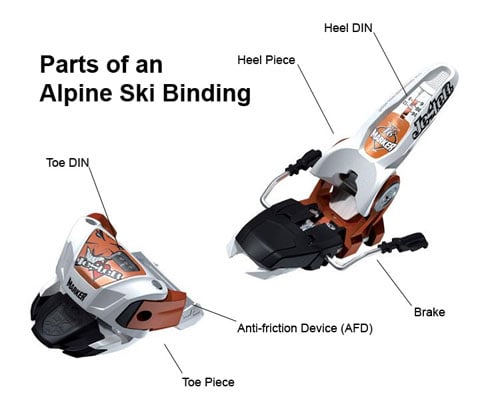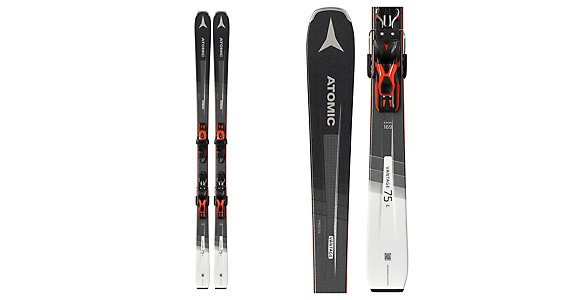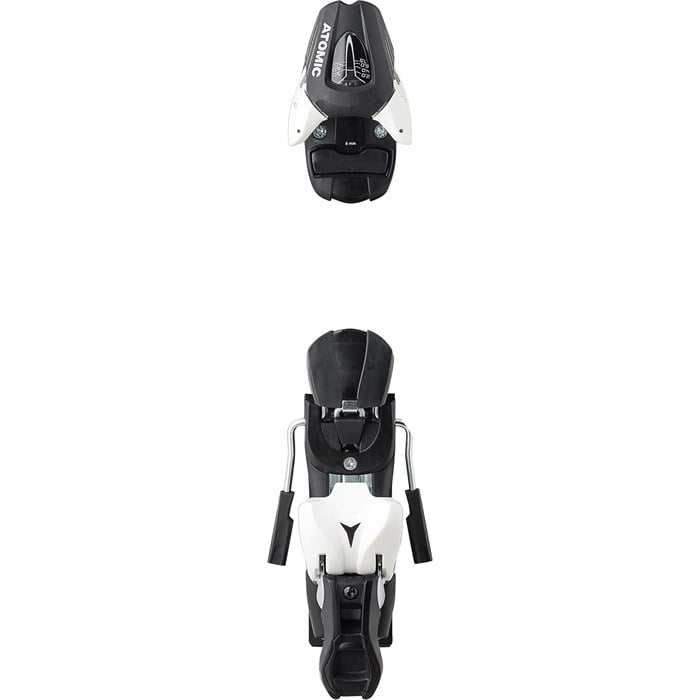Atomic AMT Ultra SQS W is our 5. carbon ski pole that’s light and extremely rigid for all-mountain skiing – with SQS safety release system and women’s grip. CLOUD 12 The Atomic Cloud 12 is one of our favorite skis for the piste, ever – featuring Servotec. Binding Freedom Templates: With help from many of the members of the Teton Gravity Research message boards, Jon maintains a set of paper templates for mounting bindings to skis. These are also a great resource for checking for hole conflicts on multiple mounts. All of the templates print on 8.5×11 paper, but be sure to. Please also be aware that these templates may be updated at any time, so please be sure that you are using the revision linked here (suffix R2 denotes revision 2). If you want to discuss the templates, or want to help create templates for bindings not listed here, please visit the active discussion here.
The mass exodus of more skiers each season ducking boundary lines to head into the outback at ski areas — often called “sidecountry” terrain — has perpetuated an evolution in gear aimed at skiers who demand more mobility in the terrain that chairlifts do not serve. Bindings have received a sizeable bulk of this attention, including beefy alpine-touring products like the Marker Tour F12 or Fritschi’s DIAMIR model, both of which offer solid downhill performance along with an option to “flip a switch” and change to a free-heel mode for heading back up-mountain again.

Next year, a new player emerges in this space. A partnership between Salomon and Atomic has resulted in a binding that’s being advertised as setting a new standard with “next generation freeride performance” and increased efficiency on the uphill side. Oddly, the bindings — called either the SALOMON Guardian 16 and/or the ATOMIC Tracker 16 — will be offered for the same recommended retail price and will be identical both technically and functionally. Two brand names, same binding.

Those “next generation” promises? The companies are a bit low on the details being released as of now, but a press teaser issued this week cites a binding chassis with a “lower stand height for greater stability” plus the bindings will have an oversized platform to “enable maximum power transmission and responsiveness for quick and more precise turns,” the companies tout.
DIN range will be 7 to 16, enabling mission-critical grip on the boot for big air and the sickest terrain. Another distinguishing feature may be the bindings’ hike/ride switch, which changes the mode from downhill to up with the press of a ski pole tip. On top, ready to shred with locked heels again, a user will simply step down to engage four steel teeth that are spring-actuated to lock the heel piece back into place.
The Salomon/Atomic bindings are not designed to compete with lightweight bindings from the likes of Dynafit that lean toward the ski-touring crowd. “There are companies that are known as uphill touring companies, and that is not” what these bindings will be, a Salomon media rep told us. Instead, the Salomon/Atomic bindings are touted to “optimize downhill performance” and to give skiers the opportunity to access more of the mountain and get to the powder “without compromising downhill ability,” the media rep cited.
Overall, the bindings will be advertised as the “most durable and easiest to use binding that has hike and ride” modes. Unfortunately, other details we wanted like pricing and product weight have not been released. A company rep said more information will be offered when the bindings are unveiled at winter trade shows in a couple months, including Outdoor Retailer and SIA. Skiers looking to try the bindings out should seek demos this winter. They will likely ship to retailers for consumer sale next August in time for the 2012/2013 ski season.
—Stephen Regenold is founder and editor of www.gearjunkie.com. Connect with Regenold at Facebook.com/TheGearJunkie or on Twitter via @TheGearJunkie.
The mass exodus of more skiers each season ducking boundary lines to head into the outback at ski areas — often called “sidecountry” terrain — has perpetuated an evolution in gear aimed at skiers who demand more mobility in the terrain that chairlifts do not serve. Bindings have received a sizeable bulk of this attention, including beefy alpine-touring products like the Marker Tour F12 or Fritschi’s DIAMIR model, both of which offer solid downhill performance along with an option to “flip a switch” and change to a free-heel mode for heading back up-mountain again.

Next year, a new player emerges in this space. A partnership between Salomon and Atomic has resulted in a binding that’s being advertised as setting a new standard with “next generation freeride performance” and increased efficiency on the uphill side. Oddly, the bindings — called either the SALOMON Guardian 16 and/or the ATOMIC Tracker 16 — will be offered for the same recommended retail price and will be identical both technically and functionally. Two brand names, same binding.
Those “next generation” promises? The companies are a bit low on the details being released as of now, but a press teaser issued this week cites a binding chassis with a “lower stand height for greater stability” plus the bindings will have an oversized platform to “enable maximum power transmission and responsiveness for quick and more precise turns,” the companies tout.
DIN range will be 7 to 16, enabling mission-critical grip on the boot for big air and the sickest terrain. Another distinguishing feature may be the bindings’ hike/ride switch, which changes the mode from downhill to up with the press of a ski pole tip. On top, ready to shred with locked heels again, a user will simply step down to engage four steel teeth that are spring-actuated to lock the heel piece back into place.
The Salomon/Atomic bindings are not designed to compete with lightweight bindings from the likes of Dynafit that lean toward the ski-touring crowd. “There are companies that are known as uphill touring companies, and that is not” what these bindings will be, a Salomon media rep told us. Instead, the Salomon/Atomic bindings are touted to “optimize downhill performance” and to give skiers the opportunity to access more of the mountain and get to the powder “without compromising downhill ability,” the media rep cited.

Overall, the bindings will be advertised as the “most durable and easiest to use binding that has hike and ride” modes. Unfortunately, other details we wanted like pricing and product weight have not been released. A company rep said more information will be offered when the bindings are unveiled at winter trade shows in a couple months, including Outdoor Retailer and SIA. Skiers looking to try the bindings out should seek demos this winter. They will likely ship to retailers for consumer sale next August in time for the 2012/2013 ski season.
Atomic Template Ski Bindings

Atomic Template Ski Binding Instructions
—Stephen Regenold is founder and editor of www.gearjunkie.com. Connect with Regenold at Facebook.com/TheGearJunkie or on Twitter via @TheGearJunkie.